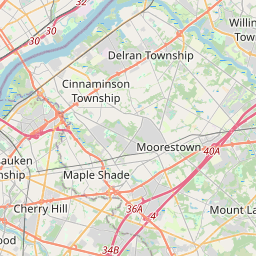Camden Civil War Memorial
Historical marker location:






April 12, 1861: The Civil War begins with the Confederate attack on Fort Sumter, located in South Carolina's Charleston Harbor.
April 15, 1861: President Abraham Lincoln issues a call for 75,000 volunteers to serve in the Union Army to suppress the rebellion.
May 24, 1861: The first major land battle, known as the First Battle of Bull Run (or First Battle of Manassas), takes place in Virginia. It ends in Confederate victory.
September 17, 1862: The Battle of Antietam in Maryland becomes the bloodiest single-day battle in American history, with heavy casualties on both sides. The Union forces, commanded by General George McClellan, manage to halt Confederate General Robert E. Lee's advance into Union territory.
January 1, 1863: President Lincoln issues the Emancipation Proclamation, declaring that all slaves in Confederate-held territories are to be set free. However, the proclamation does not immediately free all slaves in the United States.
July 1-3, 1863: The Battle of Gettysburg in Pennsylvania takes place, resulting in a significant Union victory and inflicting heavy casualties on Confederate forces. It marks a turning point in the war.
November 19, 1863: President Lincoln delivers the Gettysburg Address, emphasizing the principles of liberty, equality, and the preservation of the Union.
April 9, 1865: General Robert E. Lee surrenders to Union General Ulysses S. Grant at Appomattox Court House in Virginia, effectively ending the Civil War.
April 14, 1865: President Lincoln is assassinated by John Wilkes Booth while attending a play at Ford's Theatre in Washington, D.C.
May 10, 1865: Confederate President Jefferson Davis is captured, signaling the collapse of the Confederate government.
December 6, 1865: The Thirteenth Amendment to the United States Constitution is ratified, officially abolishing slavery throughout the country.
While this timeline provides an overview of key events, it is important to note that the Civil War spanned over four years, from 1861 to 1865, and encompassed numerous battles, campaigns, and political developments that shaped the course of American history.
The first steam-powered ferry in the United States, the Juliana, began operating between Hoboken and New York City in 1812.
During the 19th century, Camden County became a major industrial hub due to its location on the Delaware River. The county experienced significant growth as industries flourished, such as shipping, manufacturing, and transportation. The Camden and Amboy Railroad, established in 1830, played a key role in the county's development, connecting Camden to Philadelphia and further fueling economic growth.
In the 20th century, Camden County faced both successes and challenges. The construction of the world-renowned Benjamin Franklin Bridge in 1926 bolstered the county's connections to Philadelphia and served as a symbol of progress. However, like many industrial areas, Camden County also experienced economic decline and urban decay in the mid-20th century due to the shift of industries and suburbanization.
In recent years, Camden County has undergone a revitalization process and focused on urban renewal efforts. The county has invested in education, recreation, and healthcare initiatives to improve the quality of life for its residents. Additionally, Camden's waterfront has been transformed into an area of commercial and residential development, attracting new businesses and visitors to the county. Overall, Camden County's history is a tale of growth, challenges, and ongoing efforts to adapt and thrive in a changing world.
Camden County Timeline
This timeline provides a condensed summary of the historical journey of Camden County, New Jersey.
- 1705: Camden County, NJ was founded as a county in the Province of West Jersey.
- 1726: The first road, known as Kings Highway, was constructed in the county.
- 1801: The bustling Camden and Amboy Railroad was established, promoting growth in the county.
- 1844: The City of Camden was incorporated, becoming the county seat.
- 1854: The county's first public school was established, providing education for local children.
- 1901: The Benjamin Franklin Bridge, connecting Camden County to Philadelphia, was opened.
- 1941: The famous Campbell Soup Company relocated its headquarters to Camden County.
- 1955: The Walt Whitman Bridge opened, further connecting the county to Philadelphia.
- 2001: The Battleship New Jersey Museum and Memorial was established in Camden County.